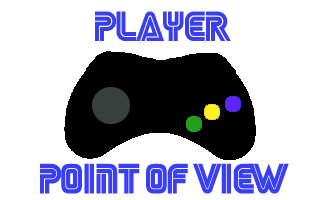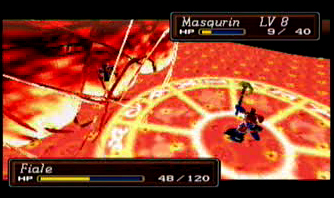
Introduction.
This article is part of a joint-blogging project with my brother over at Sodaware.net. Every two weeks we will be looking at some of the best games ever made and taking two very different approaches to them – I will be dealing with a very player-oriented angle, whereas as a game developer Phil will be examining the game’s design and production to see what lessons game developers can learn from them.
The accompanying half of this article is over at www.sodaware.net
What is Shining Force III?
Shining Force III is a roleplaying game for the Sega Saturn console in 1997/1998 that uses a turns-based battle system, rather like chess. It was released in three separate scenarios, although the second and third scenarios were only available in Japan. It remains my favourite RPG of all time, despite very scarily being almost ten years old now.
Mixture of gameplay
I think one of the principal factors in Shining Force III’s (SFIII) appeal is its balance. Nintendo’s Fire Emblem series uses an almost identical battle system, but loses out because it fails to develop its characters and world as successfully as SFIII. The gameplay in SFIII varies from hardcore tactical battling to more open-hearted town exploration, and your journey through the SFIII world takes in cursed ghost towns, rich autumnal castle towns and everything in between.

It’s this creation of a sort of networked world around the player that really sets this out as an accomplished RPG.
Towns feel like they belong together in these countries, and although they’re all sufficiently different to mark them out they have a very familiar and recognisable style. Villagers, too, are all individual but not bizarre; it’s an RPG that focuses on a coherent world rather than trying to show how many different races and wacky ideas it can fit in. You really get the sense that this world hangs together.
Although SFIII does include traditional epic-fantasy RPG elements of great evil and resurrections and so on, it also has a very grounded and quite serious plot involving two warring nations, and the decisions that have to be faced by those lands’ leaders. I’m not going to pretend that it’s an in-depth political commentary, but it does help to frame the impending huge-scale disaster by including more realistic issues of famine and refugees.
Brain Training
What else is it about Shining Force III that captured me? Well, it’s a game that needs brain power. Not in the puzzle sort of sense, but the battles certainly require brain power and strategy of the highest order. The comparison with chess is probably a little strong here, but you do need to calculate several moves in advance against the larger enemies to figure out who should go where, when and what they should do. Some battles, not content with facing you against squads of highly tough warrior dwarves and hooded mages, include refugees to rescue or ancient temples to explore. These optional diversions really do help branch out and develop the battles by allowing a degree of differentiation – the player has control over as much or as little of the battle as they want. Don’t want to rescue the refugees being persecuted by the Empire? You’re heartless, but it’s your choice.
TimeSync
Following on from this, the decisions you make in Scenario I affect events in the other games through Camelot’s “Synchronicity” system. When you finish the first game, you create a save file which can then be used at the start of the second game. As all three games happen simultaneously, and use some of the same characters, locations and events, your actions have consequences for other characters. Getting to see the same events from different perspectives is also a refreshing idea, and although the second and third discs were in Japanese, I find it rather intriguing to think about the subtle differences there would be in how each side sees the same situation.
Summary
RPGs are supposed to have elements of fantasy, but there is only so far the player can suspend their disbelief when considering the world presented to them. Generally, elements such as fantastic creatures and magic are accepted because they relate to the player’s imagination, and often I think the player wants to believe in them. I want to believe in birdmen and magicians who can summon the phoenix and so on.
For an RPG to stretch the player’s imagination and yet remain mostly acceptable, it has to operate within some form of logical boundaries. Shining Force III does this brilliantly by creating towns and villagers that fit together by not always being outlandish, almost garish characters. The game’s small details all combine to create a background to one of the most involving games I have ever played.
For the other half of this article, be sure to head over to www.sodaware.net/blog to read a really interesting look at the game and what lessons game developers can learn from it.
 My name is James Newton, and this is my website - a collection of my writings about
videogames, music and all my other thoughts.
My name is James Newton, and this is my website - a collection of my writings about
videogames, music and all my other thoughts.